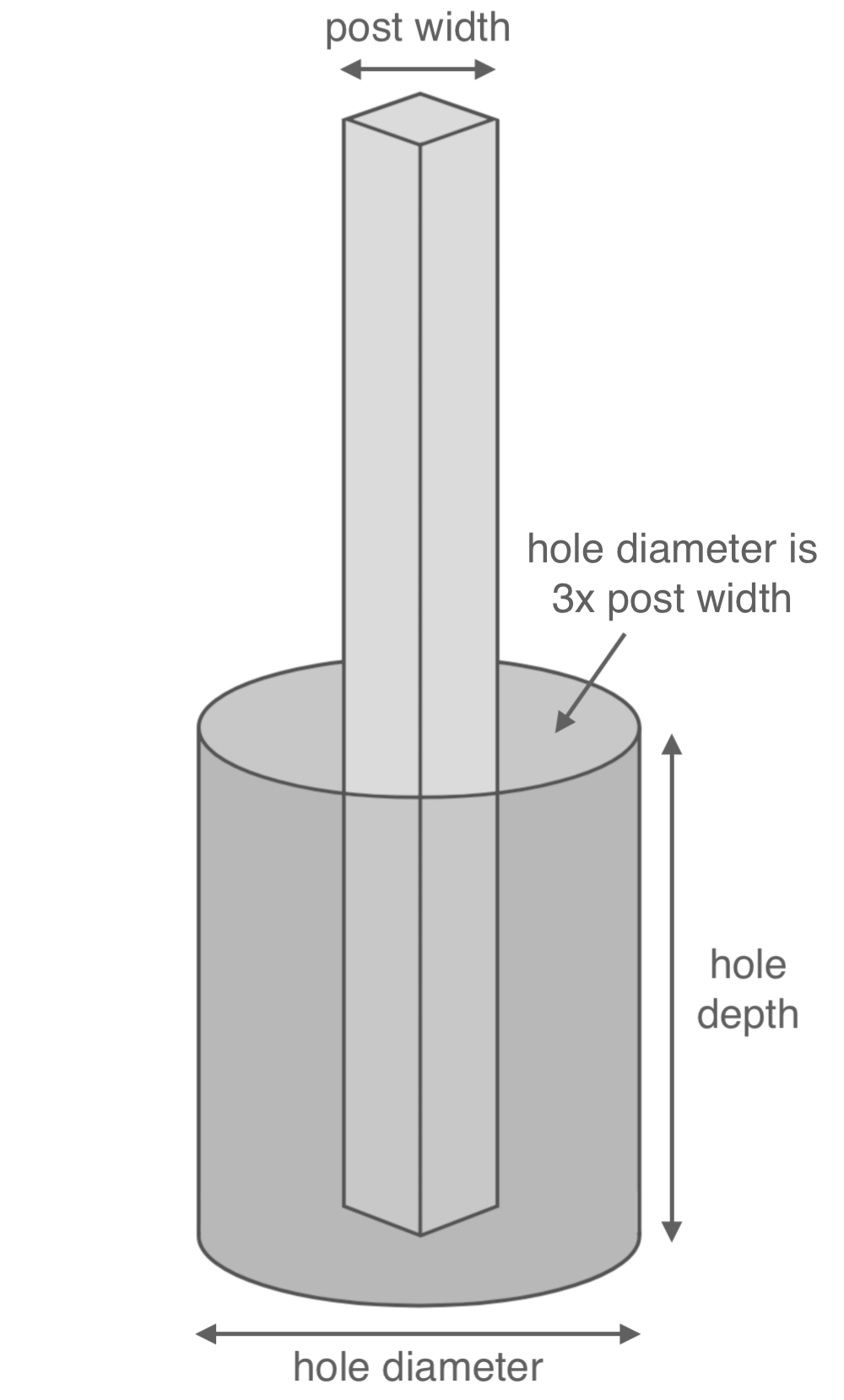Post Hole Concrete Calculator
Result
Cubic Yards:
Cubic Meters:
Pre-mixed Bags
50-lb Bags:
60-lb Bags:
80-lb Bags:
Estimated Concrete Cost
How to Use the Post Hole Calculator
Fence posts must be sunk into the ground and secured using concrete in order to create a stable and long-lasting fence. Concrete can be purchased ready to pour in large amounts or in dry bags for smaller amounts.

To calculate the amount of concrete you will need to set fence posts, use this post hole estimator. Enter your post and hole dimensions in any units, and the calculator will give you the results in cubic yards and the number of pre-mixed, dry bags of concrete needed.
Fence posts must be set into the ground at a depth that is a minimum of ⅓ the total height of the fence. For a 6′ fence, this would mean the hole must be a minimum of 2′ deep. The width of this hole should be three times the width of the post. If your fence posts are made of 4″ x 4″ boards or are round with a 4″ diameter, these have an actual width or diameter of 3-½”. This would make the width or diameter of the hole 10.5′.
It’s a good idea to order roughly 10% additional material to account for settling and spillage. If you don’t have many posts to set, it may be more cost-effective to purchase dry concrete, mix it with water, and set the posts yourself.
If, however, you need a cubic yard or more of concrete total, you may find it easier to have it delivered pre-mixed and ready for pouring. Concrete contractors can provide estimates for delivering and installing cement for your post project.
How Much Concrete Do You Need Per Fence Post?
Concrete is sold ready-mixed (and usually delivered) by the cubic yard or in dry, pre-mixed bags by weight.
To calculate how much concrete you need, you need to know the post size you are going to use and how many posts you are installing. Your post diameter if it is round, or length and width if it’s square, and height determine how big each hole needs to be.
As stated above, fence post holes should be three times the diameter or width of your post and ⅓ as deep as your fence is tall.
First, you need to calculate the volume for the post hole. Then calculate the volume for the part of the post that will be submerged in the hole. Make sure all your units of measurement are the same, meaning that if you measure the width in inches, you should also measure the length and depth in inches.
To easily use the table above, convert your units to feet if they aren’t already. Use our calculators to quickly convert inches, yards, or meters to feet.
Or, if you are using inches for your calculations, you can convert to cubic yards by dividing the inches by 46,660 – the number of cubic inches in a cubic yard.
Post Hole Volume Formulas
Your post holes may be round, meaning cylindrical, or they may be rectangular, depending on how the post hole is dug. Likewise, your post itself may be round or square in shape.
Depending on the shape of the post and the hole, this may change the formula used to calculate the volume. Use the following formulas to calculate volume. For other types of round holes, use our cylinder cubic yardage calculator.
Rectangle:
Cylinder:
Calculate Concrete Volume
Unlike a typical concrete pier, you need to account for the space that the post takes up in the hole when estimating. So, with the volume of the submerged post and the volume of the hole figured out, subtract the post volume from the hole volume, and you will have the volume of concrete needed for each hole.
Simply multiply that amount times the number of posts to get the total quantity. Don’t forget to add in some extra for spillage and waste.